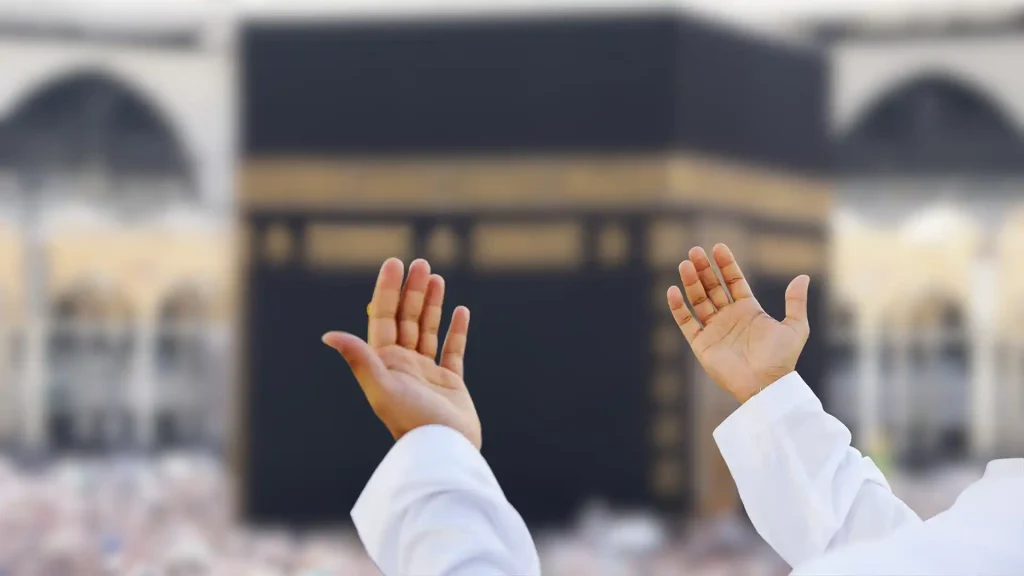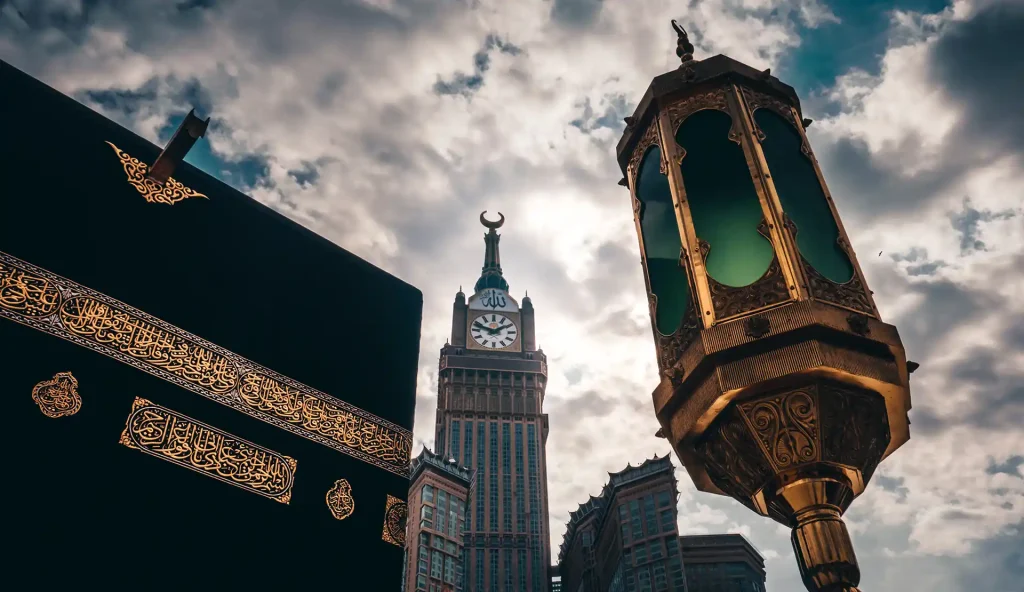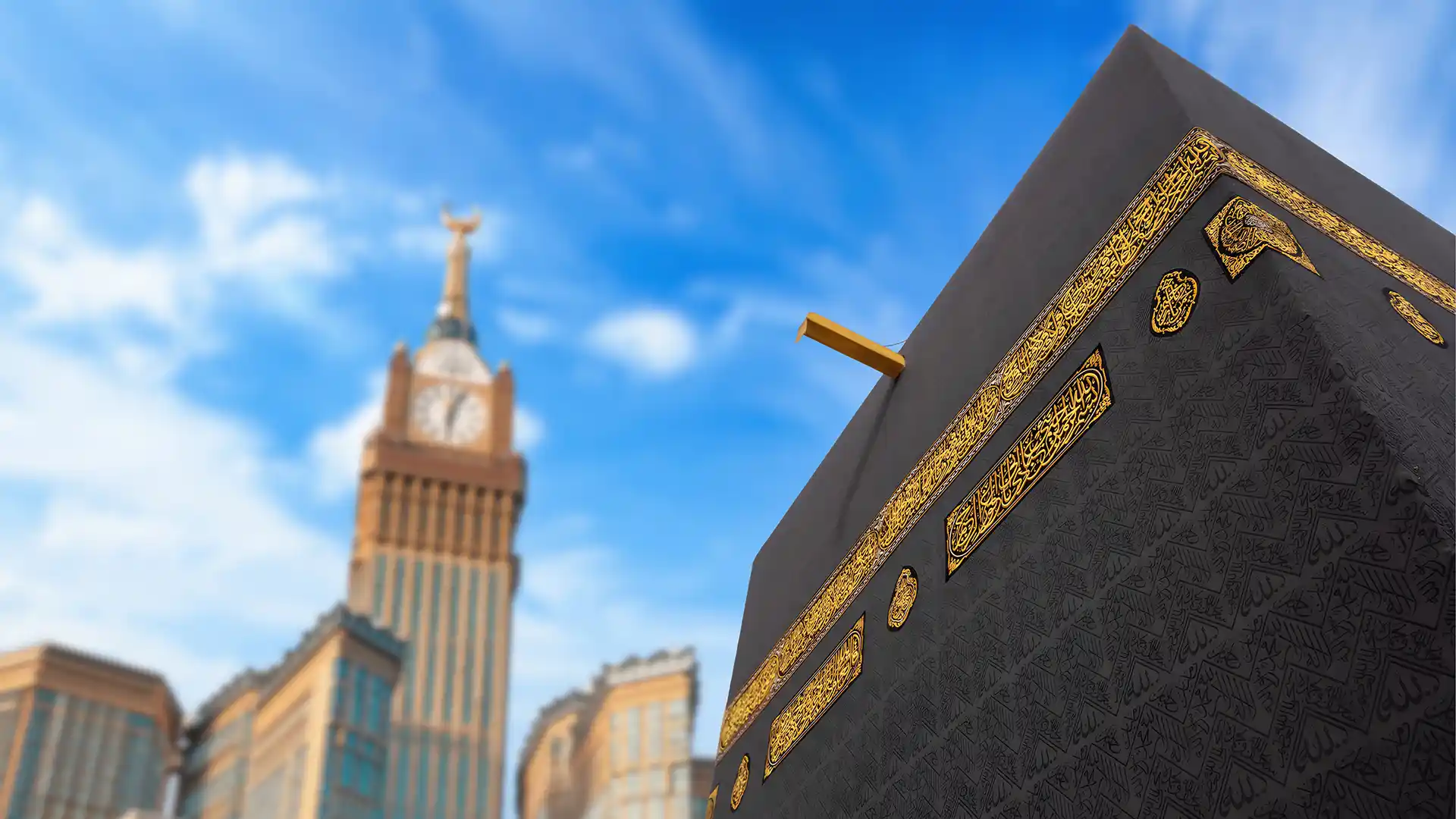Umrah is a pilgrimage to Mecca and sits among the acts of devotion in Islam. Often called “the lesser pilgrimage”, it takes place in the city of Mecca and can be performed at any time of the year except for the Hajj season. People perform their rituals seeking closeness to God. The journey carries importance, though it is not a pillar of Islam. Muslims often choose to go when they feel ready, and there is no set obligation upon them.
But what is Umrah, how does it differ from Hajj, and what visa types might you need in order to perform Umrah? If you have any of these questions, you can find the answer within the following text.

Significance of Umrah for Muslims
So, what is Umrah? Umrah is a sacred Islamic pilgrimage to Mecca, undertaken by Muslims seeking spiritual cleansing, forgiveness, and closeness to God. Umrah brings moments of spiritual reflection. A person steps away from normal routines and turns attention toward prayer and worship. Each part of the ritual holds history, connecting believers to stories from the past.
Forgiveness plays a strong role in the meaning of Umrah. Many recall the words of the Prophet Muhammad, who said that the Umrah pilgrimage removes sins that lie between one pilgrimage and the next. People feel hope that God accepts their prayers and grants mercy.
Umrah also creates an atmosphere where social barriers fade. The sight of crowds dressed in simple garments reflects how the journey gathers people on equal ground. Pilgrims sense unity as they stand shoulder to shoulder, driven by faith.
Umrah vs. Hajj – What’s the Difference?
Now that we have talked about Umrah and its significance, let’s talk about Hajj, the mandatory pilgrimage for every financially and physically capable Muslim. Let’s talk about the main differences between Hajj and Umrah.
| Aspect | Umrah | Hajj |
| Obligation | Not obligatory | Obligatory once for physically and financially capable Muslims |
| Timing | Any time of year, except for the Hajj season | Hajj begins from the 4th of Dhul-Hijjah until the 9th of Dhul-Hijjah, also known as the Day of Arafah. |
| Duration | A few hours or one day | Several days |
| Rituals | Tawaf, Sa’i, hair trimming or shaving | Ihram, Tawaf, and Sa’i, standing at Mount Arafat, staying at the Muzdalifah, Jamarat. |
| Religious Status | Recommended | One of Islam’s five pillars |
Hajj stands as a required act for those who are physically and financially capable. Umrah does not carry the same legal obligation. Yet people value it highly and seek its rewards. Umrah can happen at any time. Hajj takes place only on specific days during the Islamic lunar calendar.
Timing of Umrah
Pilgrims can perform Umrah throughout the year (except for the Hajj season). Still, some seasons bring larger crowds. Many choose Ramadan, believing the act carries extra spiritual merit then.
Others plan trips in quieter months to avoid congestion. These decisions often rest on personal preference, health, or financial conditions. Some find cooler weather easier for travel. Others want the atmosphere of Ramadan or the sacred months. Pilgrims consider these factors when planning their journey.
The Spiritual Significance of Umrah
Umrah is a deeply spiritual journey that symbolizes purification, renewal of faith, and closeness to God. Though not obligatory, it offers immense rewards; washing away past sins, reconnecting the heart to divine purpose, and allowing believers to walk in the footsteps of the prophets in a state of devotion.
How to Perform Umrah – A Step-by-Step Guide
Umrah consists of clear steps. Each step requires attention and intention.
1. Ihram: Entering the State of Ritual Purity
Before reaching the holy city, a pilgrim must enter Ihram. This state carries rules and physical signs.
Men wear two white, unstitched cloths. One covers the lower body, the other drapes over the shoulders. Women wear regular modest clothing. No face veils or gloves cover them during Ihram, though they remain fully clothed otherwise.
Entering the Ihram means avoiding certain actions. A person cannot trim hair, cut nails, wear perfume, or engage in intimate relations. Pilgrims stay calm, speak with respect, and avoid quarrels.
Pilgrims then declare their intention. They say:
“Labbaik Allahumma Umrah.”
The words mean they present themselves before God for Umrah. They keep repeating the Talbiyah, a special chant, until they reach Mecca:
“Labbayka Allahumma labbayk, labbayka la shareeka laka labbayk. Innal hamda wan-ni‘mata laka wal mulk, la shareeka lak.”
2. Tawaf: Circumambulation of the Kaaba
Upon arrival in Mecca, pilgrims enter the Grand Mosque. Their first goal is the Kaaba. Here they begin Tawaf, which is circumambulating the Kaaba seven times, counterclockwise.
During Tawaf, pilgrims recite prayers or remember God in silence. They stay in a state of ritual cleanliness. After seven circuits, they move on to pray.
Pilgrims pray two raka’as (praying units) near Maqam Ibrahim and drink Zamzam water.
3. Sa‘i – Walking Between Safa and Marwah
The next step is Sa‘i. Pilgrims walk between two hills called Safa and Marwah while reciting Duaa (prayers) during this time. Seven trips complete the ritual. Each length counts as one lap. The ritual commemorates Hajar’s search for water when she ran between these two hills.
4. Exiting Ihram – Shaving or Trimming the Hair
The last step is to exit the state of Ihram. Men either shave their entire head or trim hair evenly across the scalp. Women trim a small portion from the ends of their hair.
This act closes the rituals. A pilgrim leaves the state of Ihram and resumes normal life. The Umrah process is complete, and a sense of completion settles over the person who has finished the journey.
Who Can Perform Umrah?
Umrah is open to all Muslims who meet certain conditions. To perform Umrah, a person must:
- Be Muslim
- Be physically and mentally capable of performing the rituals
- Have financial means without neglecting family needs
- Families often bring children, but parents consider:
- The physical demands of long walks
- Managing children in large crowds.
- Ensuring children can handle the journey comfortably.
What’s the Duration of Umrah
The actual rituals of Umrah can be completed in several hours. Many pilgrims, however, stay longer in Mecca to:
- Spend more time praying at Masjid al-Haram in Mecca
- Perform multiple Umrahs during their visit
- Visit religious sites in Mecca
- Travel to Madinah to pray at the Prophet’s Mosque
So there’s no single answer to how long does Umrah take. Pilgrims adjust their stay based on personal schedules, budgets, and spiritual intentions. The usual duration of an Umrah trip is 7, 11, or 21 days.
Types of Umrah Visas
Travelers to Saudi Arabia can perform Umrah on any visa type, and we are going to discuss the most popular visas for Umrah in the following section.
Saudi eVisa (Saudi Tourist eVisa)
Nationals of most countries (except for nationals of the GCC) need a visa to enter the Kingdom of Saudi Arabia. Saudi Arabia issues a Saudi Tourist eVisa to citizens of many eligible countries. It allows visitors to perform Umrah (except during the Hajj season).
The eVisa is the recommended option since you won’t need to make any trips to any agencies, as the process is entirely electronic. It is also more affordable and allows multiple entries.
Key details include:
- Valid for one year
- Allows multiple entries
- Maximum stay of 90 days
- Requires a separate Umrah permit for entering specific holy sites
- The Saudi Arabia evisa simplifies travel but does not permit Hajj.
- To apply, you will have to complete a Saudi eVisa application and wait for approval, which generally takes around 72 hours.
Traditional Umrah Visa
For many pilgrims, the traditional Umrah visa remains common. This visa:
- Is arranged through licensed travel agencies
- Grants a single-entry permit
- Requires proof of hotel bookings and return flights
- Has validity dates determined by the Saudi Ministry of Hajj and Umrah
- Pilgrims must obtain the Umrah permit
- Pilgrims must exit Saudi Arabia before the visa expires.
Umrah Permit
Regardless of visa type, pilgrims need an Umrah permit to perform the rituals inside Masjid al-Haram. This permit:
- Is obtained through official apps like Nusuk
- Controls the number of pilgrims allowed at each time slot
- Helps manage crowd safety, especially during busy seasons
- Assigns specific times for entry
- Pilgrims apply for the permit shortly before their planned Umrah date.
Other Saudi Visa Types for Umrah
Visitors can perform Umrah on any visa type, except a Hajj visa.
Visit Visa
A visit visa permits people to enter Saudi Arabia for tourism, family visits, or business. Pilgrims on a visit visa can apply for an Umrah permit and perform Umrah if the permit is granted.
Transit Visa
Saudi Arabia offers a transit visa for travelers passing through the country. Rules to perform Umrah on a transit visa include:
- Short stays (up to 96 hours in many cases)
- Obtain an Umrah permit
- Tight time constraints require careful planning
Transit visa requirements suit travelers with brief layovers but may not be practical for those wanting a longer stay.

Preparing for Umrah – What You Need to Know
When traveling to Saudi Arabia for Umrah, careful planning, spiritually and practically, can be extremely beneficial. Here are a few tips you should keep in mind when preparing for Umrah travel.
Travel Planning Tips
- Choose the visa type that works best for you.
- Book accommodation near Masjid al-Haram if possible.
- Get the Umrah permit on the Nusuk platform.
- Carry copies of passport, visa, bookings, and vaccination proof.
- Bring Saudi Riyals for small expenses.
- Avoid peak Umrah seasons for fewer crowds.
Spiritual Preparation
- Learn the steps of Ihram, Tawaf, and Sa’i.
- Memorise short duas.
- Set a clear intention (niyyah).
- Make amends and seek forgiveness before travel.
Packing Essentials
- Ihram clothing (men – 2 white unwoven cloths; women – modest attire).
- Unscented toiletries.
- Comfortable sandals.
- Small bag for shoes and documents.
- Water bottle and snacks.
- Medications and basic first aid.
- Power bank and chargers.
Health & Safety Tips
- Confirm required vaccinations (e.g. meningitis).
- Stay hydrated and rest between rituals.
- Use sanitiser and maintain hygiene.
- Avoid rushing in crowds.
Checklist for Departure
- Passport (valid 6+ months)
- Visa and flight tickets
- Hotel details
- Confirm Umrah permit via Nusuk
- Local currency and active bank cards
- Emergency contacts saved
Why Do Muslims Perform Umrah Multiple Times?
Muslims often perform Umrah more than once to renew their spiritual connection, seek forgiveness, mark special occasions, or take advantage of visiting Saudi Arabia for other purposes. There’s no set limit to how many times one can perform Umrah.
Common Questions About Umrah (FAQ)
Enter the Ihram with intention. Recite Talbiyah while travelling. Perform Tawaf, pray two rak‘ahs. Drink Zamzam water. Complete Sa’i. Shave or trim hair.
Usually 4 to 6 hours, depending on crowd and pace. Typically, pilgrims choose to stay for 11 or 21 days in Saudi Arabia to perform different aspects of Umrah or multiple Umrahs.
Yes, outside Hajj season, but permits via Nusuk are still required.
Yes, women can travel alone for Umrah.
Costs vary based on travel time, accommodation, type of visa, and services chosen.
